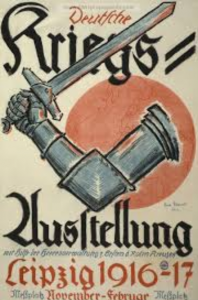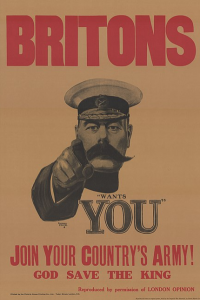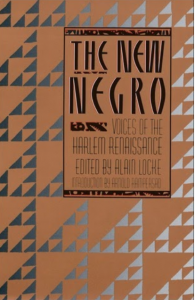Lecture: Charlestons and communists (1915 – 1925)
No doubt the biggest event during this timeframe was World War I. Having an immediate need to recruit citizens fighting in battlefield and raising war bonds, the WWI in 1914-18 established the importance of propaganda posters.
In a way, we can also see the propaganda posters in WWI marking a turning point in the commercial design world. By replacing drawn and painted illustration with a graphic and pictorial technique, print production for these posters eventually became more efficient and suitable for mass production.

1914 Germany “DEUTSCHE KRIEGS-UEBERRASCHUNG” Poster

1914 UK Lord Kitchener Wants You poster

1917 US Uncle Sam wants you poster
One of the most noticeable change was how German designers adapted to the Sachplakat/Plakatstil (German for “poster style”) technique by utilizing simple shapes, flat colors and solid shadows in their design. WWI German posters usually consist of condense Gothic headlines; while on the other hand, American and British posters often featured a national personification (ex. Uncle Sam and Lord Kitchener) with bold san serif headlines.
Despite the use of different visual techniques, both the Central Force and the Allies used propaganda posters as political weapons to evoke citizens emotions and fear of the enemies.
Research: Harlem Renaissance
Moving on to the 1920s, we see a turn that embraced African American cultural, social and artistic expressions with the Harlem Renaissance movement. The movement holds a historical significance in a way that it celebrated the “flowering of Negro literature” and the idea that “black is Beautiful”.

Alain LeRoy Locke: The Father of the Harlem Renaissance
Background
The movement was first introduced by Alain LeRoy Locke as the “New Negro Movement” in 1918 and has since then became the most influential movement in African American literary history that includes the literary, musical, theatrical and visual expression of African Americans. Followed by the Civil Rights Act of 1875 and Ku Klux Klan Act of 1871 to protect African Americans civil rights, The Harlem Renaissance in turn called for a strong vision and desire of promoting racial equality and relevance of Black people culture in America. The movement was centralized in the Harlem neighbourhood of New York City. To trace back to the origin of this community, the booming population of African-Americans was a result of the Great Migration of 6 million African-Americans from Southern United States to the urban Northeast, Midwest and West in the early 1900s. This phenomenon also demonstrates the community’s strong will to break free from European Americans’ racist beliefs and stereotypes. The Harlem Renaissance was most prevalent during the 1920s but came to a halt during the Great Depression of American stock market in the mid 1930s.
Literature & Music

The New Negro: An Interpretation
Book by Alain LeRoy Locke
In terms of literature, a collection of fiction, poetry and essays on African-American’s artistic culture was encapsulated in Alain LeRoy Locke’s 1925 book The New Negro: An Interpretation.The book encloses the work of talented writers including Countee Cullen, Langston Hughes, Claude Mckay and novelists like Rudolph Fisher, Zora Neale Hurston and Jean Toomer. Locke addressed that the “New Negro” title, differentiating from the idea of “Old Negro”, represented their racial pride and the spiritual rebirth from the black slavery background in the past. The publication of book caught the attention of the public and eventually gave rise to the Harlem Renaissance movement.
The highlights in the music world was the rise of Harlem Stride Piano and the merge between upper and lower class African American musical cultures.
Harlem Stride Piano is a highly creative and spontaneous jazz piano style first introduced by musician James P. John. The main feature of this style is having the bass note or octave (left hand) as the dominant with bass as upbeat and chords played as the downbeat. Stride piano is generally rhythmic and improvised. Pianists who practiced this style often used flamboyant devices like arpeggios, black note slide-offs and rhythmic accents to show off their skills! The introduction of this style also helped blurring the line between the rich and the poor. Traditionally, brass instruments were used by the jazz bands and “commoners” while piano was for the elites and the wealthy. As this style became more popular, the wealthy also sought interest in jazz music and blues. Some of the great Jazz performers and composers at the time included Eubie Blake, Noble Sissle, Jelly Roll Morton an Duke Ellington.
References:
https://en.wikipedia.org/wiki/Harlem_Renaissance#A_new_Black_identity
https://www.britannica.com/art/African-American-literature/The-rise-of-the-New-Negro#ref793815
https://www.quora.com/What-is-the-historical-significance-of-the-Harlem-Renaissance
https://en.wikipedia.org/wiki/Stride_(music)

Leave a Reply
You must be logged in to post a comment.